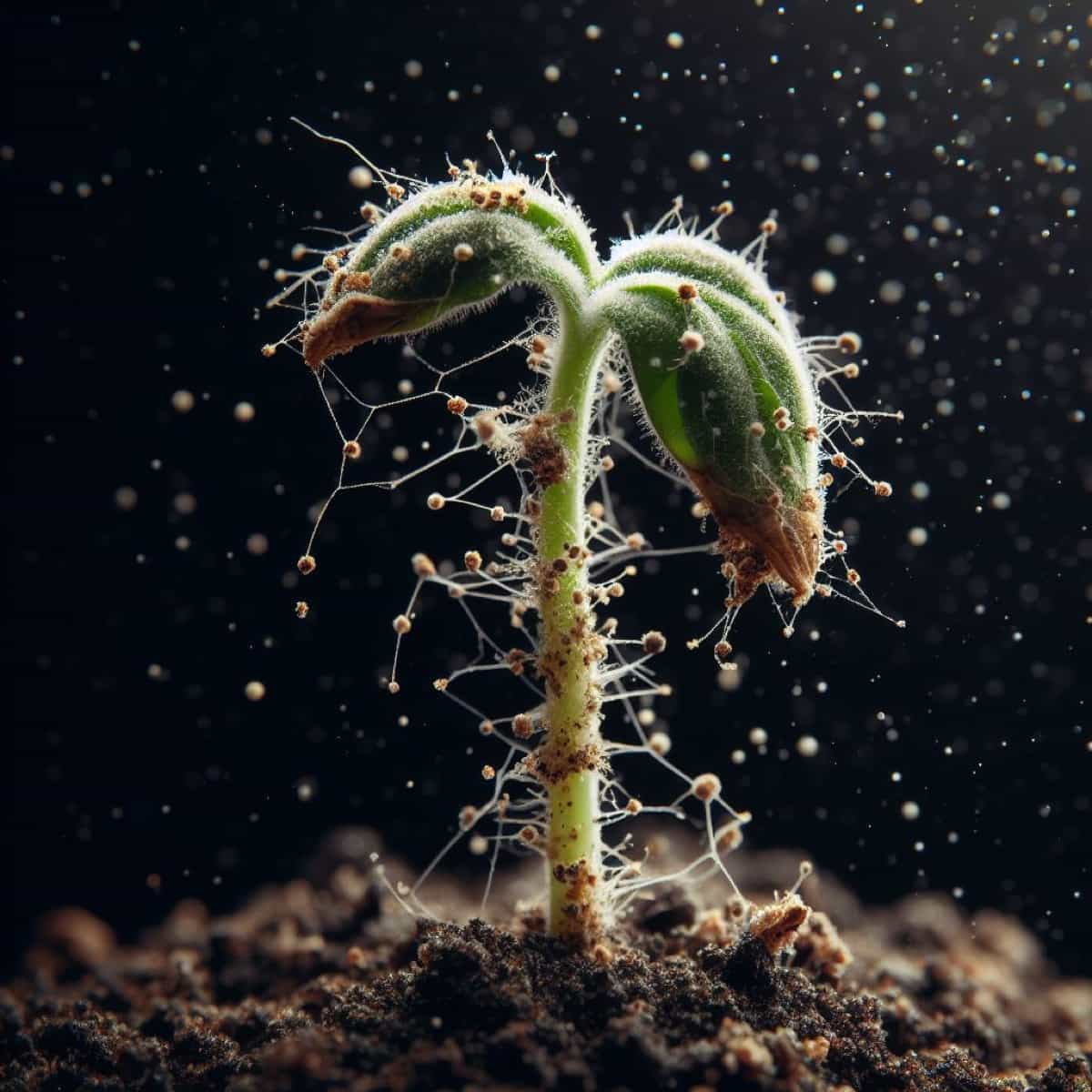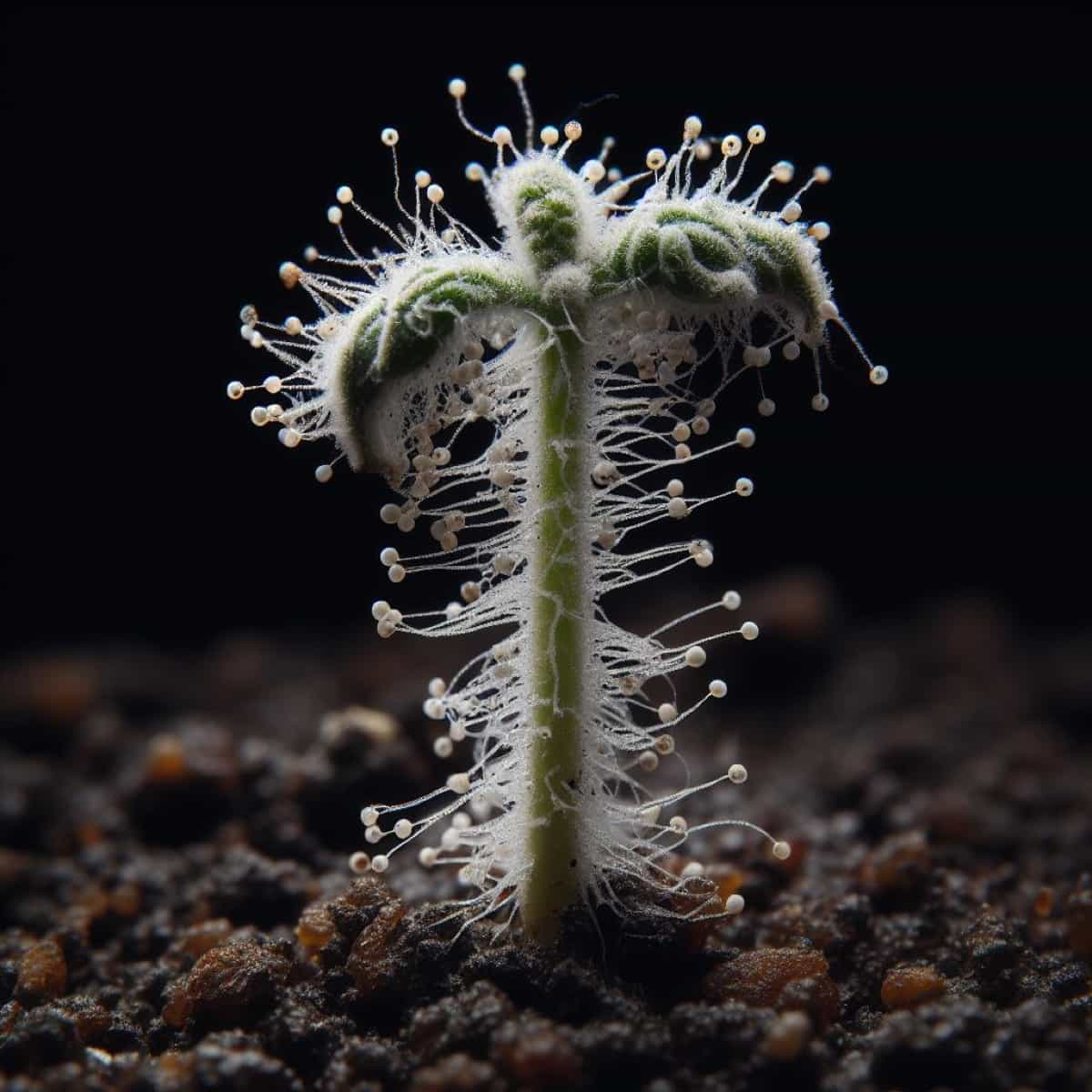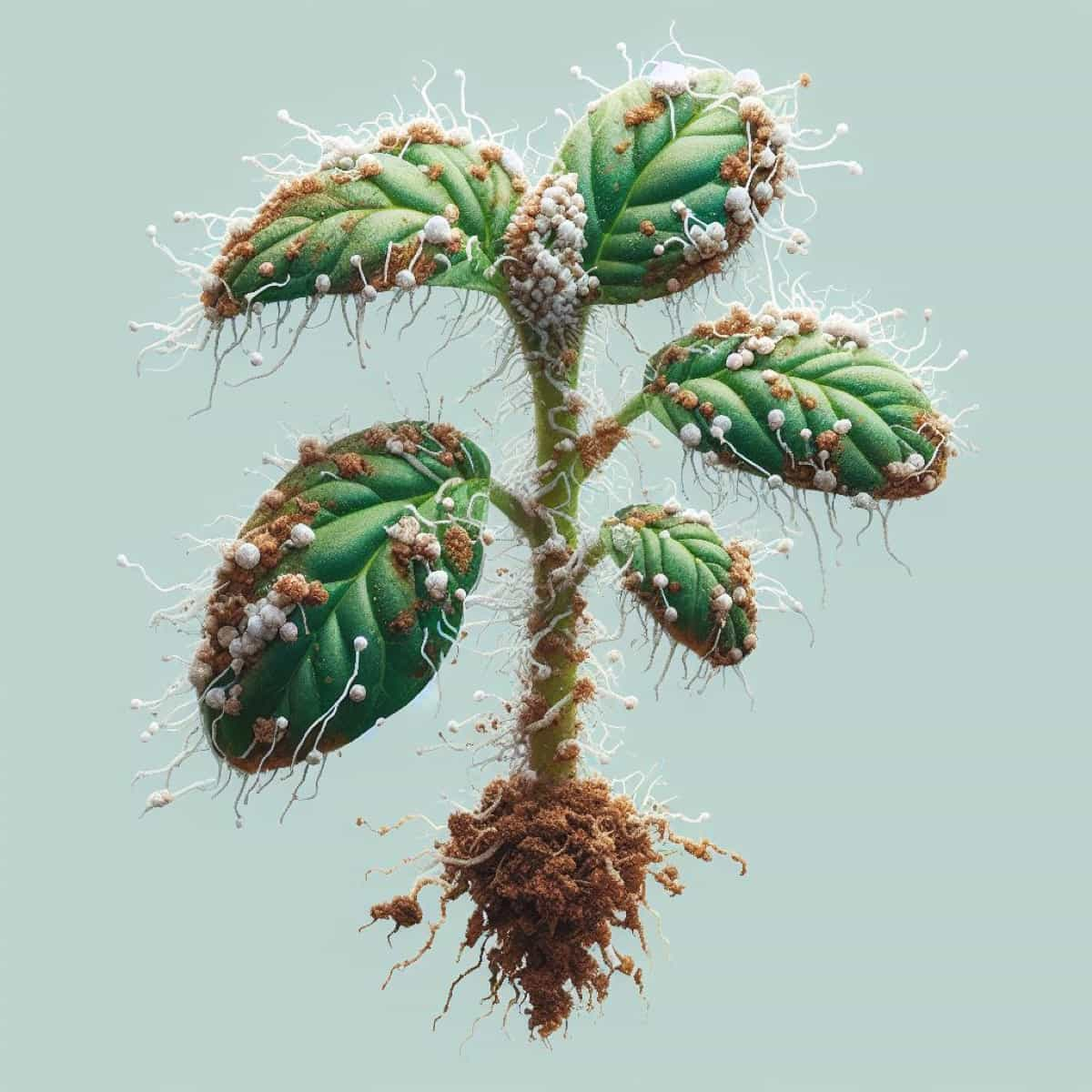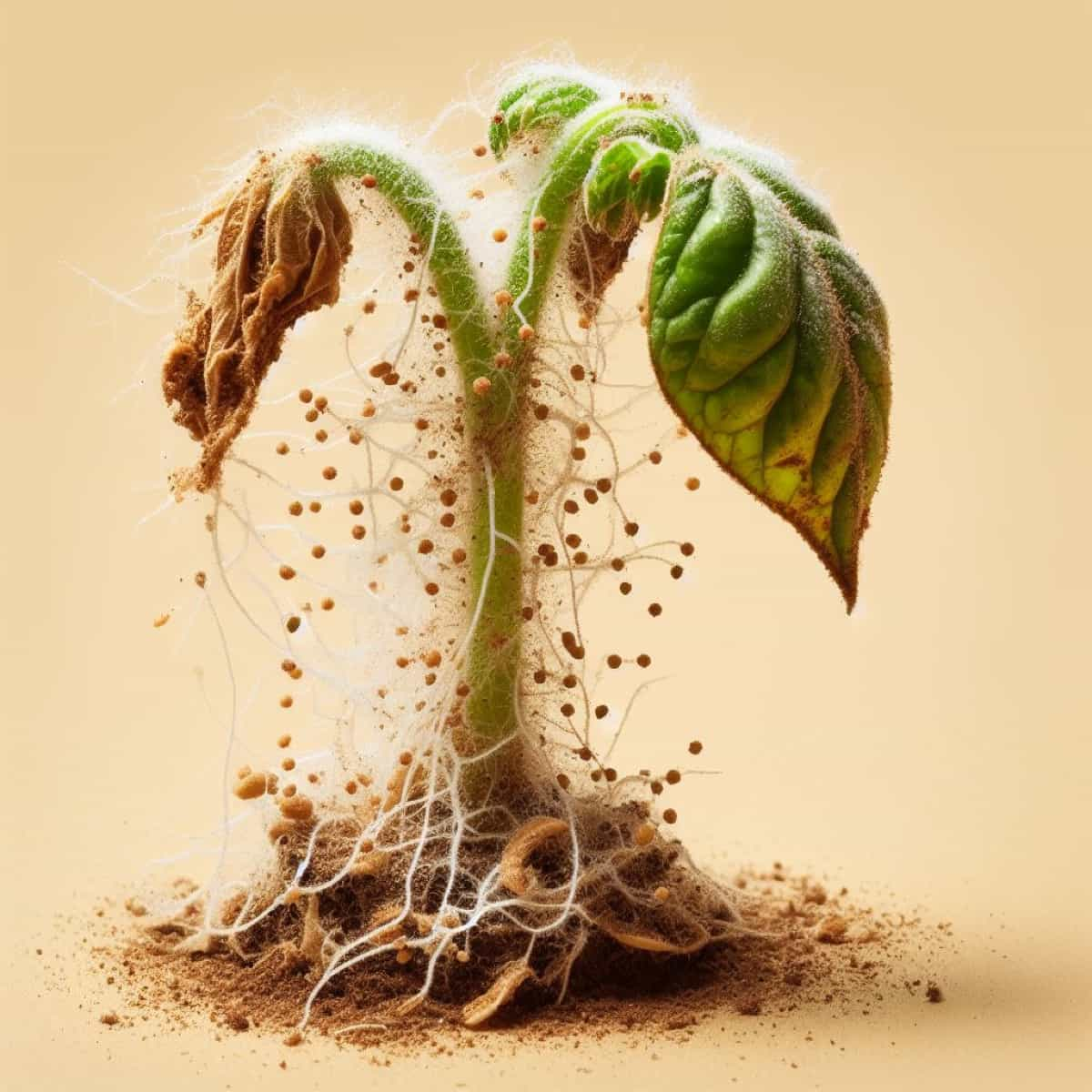“Damping off is a common issue that gardeners and plant enthusiasts face, often leading to the demise of seedlings. In this blog, we will delve into the causes, identify symptoms, and discuss effective treatments to safeguard your precious plants.”

How to Prevent Damping Off
Understanding Damping Off Causes and Risk Factors
Plant diseases such as damping off are caused by fungi, namely “Pythium,” “Fusarium,” and “Rhizoctonia.” It attacks weak, recently sprouted seedlings and grows best in moist, poorly ventilated environments. Dense planting and overwatering increase the danger and provide the perfect conditions for this fungus. When seedlings suddenly wilt, their once-healthy appearance gives way to a thinning, water-soaked stem that eventually collapses.
Since the disease may occur in both soil and soilless media, maintaining cleanliness and adequate air circulation are essential precautions. Maintaining reasonable temperatures and avoiding excessive dampness can reduce incidence. It also helps to use seeds treated with fungicide and provide organic amendments to the soil to maintain its health. To stop the spread of the infection, afflicted areas must be immediately removed after early diagnosis.
Identify Damping Off with Early Symptoms and Signs
- Stems near the soil line will experience root rot.
- Development of mold along the soil’s surface.
- Stunting of young seedlings.
- Wilt appears in the leaves and stems of seedlings.
- Newly emerging seedlings and leaves have a tarnished, grayish-brown appearance.
- When seedlings are afflicted, their stems become fragile and delicate, like strings.
- The inability to arise during seedling development is known as pre-emergent damping off.
- Seedling collapses during post-emergent damping off.
Preventive Measures for Damping Off in Seedlings
Multiple strategies are used as preventive measures against damping off in seedlings in order to shield young plants from this fungal disease. To reduce the chance of infection, first, make sure that the soil and containers used for the seedlings are sanitized. Enough moisture may encourage the development of fungi. Therefore, it’s important to minimize overwatering and provide enough drainage. Sustain ideal humidity and temperature levels because moist environments encourage damping off.
Use alternatives to inhibit the infection, such as bio fungicides or helpful bacteria. Fungicide treatment of seeds may also be successful, but only if done according to prescribed protocols. Reducing crop pressure and preventing overcrowding are two ways to do so. Finally, you may further avoid damping off in seedlings by maintaining proper hygiene by cleaning trays and instruments after each usage.
In case you missed it: How to Prevent Blossom End Rot: Causes, Identification, Symptoms, and Treatment

Soil Management Techniques to Prevent Damping Off
- Sterilize Soil: To prevent damping off, start with sterilized soil. Heat the soil in an oven at 180°F (82°C) for 30 minutes to kill pathogens.
- Well-Drained Soil: Ensure good drainage in your seedling trays or pots. Excess moisture can encourage damping off.
- Adequate Air Circulation: Provide proper ventilation to reduce humidity around seedlings, which can create a favorable environment for damping off fungi.
- Proper Watering: Water seedlings from below rather than overhead to avoid splashing soil onto the plants. Keep the soil moist but not waterlogged.
- Avoid overcrowding: Plant seedlings at an appropriate distance to prevent overcrowding, as this can promote the spread of disease.
- Fungicide Treatment: Use a fungicide recommended for seedlings. Apply it as a preventive measure according to the product instructions.
- Clean Tools and Containers: Use clean and sterilized tools and containers to avoid introducing pathogens to the soil.
Choose Resistant Plant Varieties to Combat Damping Off
One of the most important steps in preventing damping off in seedlings is choosing resistant plant kinds. Because resistant types naturally guard against this fungal disease, fewer chemical treatments are required. Types such as ‘Mountain Magic,’ a tomato cultivar resistant to damping off, are examples of disease-resistant types.
In a similar vein, ‘Cherokee Purple tomatoes have genetic characteristics that reduce their susceptibility to the illness. Furthermore, because of their resilience, ‘Celebrity’ cucumbers and ‘Liberty’ bell peppers provide great options for damping off prevention. By using less pesticides, these resistant plant types not only make gardening easier but also encourage sustainable and environmentally beneficial agricultural methods.
Environmental Control Strategies for Damping Off Prevention
- Maintain Proper Ventilation: Adequate airflow in the growing environment is crucial. Use fans or natural ventilation to reduce humidity and prevent fungal growth.
- Temperature Control: Maintaine optimal temperature range for seedlings. Avoid extreme cold or heat, as it can weaken seedlings’ resistance to damping off.
- Soil Sterilization: Use sterilized soil to eliminate harmful pathogens. Heat treatment or commercial sterilization methods can be employed.
- Humidity Management: Monitor and control humidity levels. A humidity dome or misting system can help maintain the right moisture balance.
- Seedling Spacing: Ensure adequate space between seedlings to minimize overcrowding, which can promote disease transmission.
In case you missed it: How to Prevent Club Root Disease: Causes, Identification, Symptoms, and Treatment

Biological Control Methods for Damping Off Management
Ecologically friendly techniques for controlling damping off in seedlings include biological control approaches. These methods include the use of advantageous microbes or organisms to inhibit the pathogenic fungi that cause damping off. The use of antagonistic bacteria, such as Trichoderma spp., is one efficient biological control technique. By out-competing the pathogenic fungus for nutrients and soil space, these helpful fungi may lower the population of the latter.
The introduction of advantageous nematodes, such as Steinernema feltiae, is a further strategy. Naturally occurring predators of soil-dwelling insect larvae, these nematodes may spread diseases that cause damping off. Nematodes, therefore, indirectly lower the occurrence of illness by managing the number of insects. Additionally, seedlings or soil can be treated with bio fungicides that contain good bacteria, like Bacillus subtilis, to stop the growth of damping-off pathogens.
Chemical Treatments for Controlling Damping Off
Chemical treatments may be used to control seedling damping off. Fungicides are one kind of chemical therapy that works well. Fungicides, such as captan and metalaxyl, may stop damping off by preventing the development of fungi that cause disease. It is recommended to use these compounds as a foliar spray after seedling emergence or as a drench to the soil before seed planting.
Using biopesticides is another approach to chemical control. Beneficial microorganisms found in biopesticides can oppose damping off pathogens. Trichoderma spp. Biopesticides, for instance, may be used to prevent damping off in seedlings. When applying chemical treatments, it’s essential to adhere to manufacturer guidelines in order to maximize their efficacy and reduce any possible environmental damage. In addition to chemical treatments, integrated pest management techniques must be taken into account for damping-off control.
Integrated Pest Management (IPM) Approaches for Damping Off Prevention
Integrated pest management, is a effective strategy to stop seedlings from damping off. It combines a number of tactics to reduce the likelihood of this fungus-related illness. First of all, crop rotation is essential because it breaks the damping-off pathogens’ life cycle. Second, it’s crucial to choose seed kinds that are resistant to disease. These seeds are less prone to damping off due to genetic characteristics.
Furthermore, keeping the soil well drained and aerated aids in lowering moisture levels, which is important since too much moisture encourages damping-off growth. Additionally, the use of advantageous microbes like mycorrhizal fungi may strengthen the plant’s defense mechanisms. Last but not least, maintaining proper hygiene by getting rid of contaminated plants and garbage stops the disease from spreading. When various IPM techniques are combined, damping-off prevention is effectively ensured.
In case you missed it: How to Prevent Black Knot Disease: Causes, Identification, Symptoms, and Treatment

Frequently Asked Questions (FAQ) on About Damping Off
When Is the Most Critical Time to Watch for Damping Off In Seedlings?
The first few weeks after germination are the most critical. Seedlings are most susceptible during this early growth stage.
Is damping off a concern for all types of plants?
Damping off is more common in certain plants, particularly those grown from seeds. It can affect various types of seedlings, including vegetables, flowers, and herbs.
Conclusion
To prevent damping off in seedlings, use sterilized soil, proper watering, adequate ventilation, and humidity levels. Avoid overcrowding, provide good drainage, and regularly inspect for signs of infection. Remove affected plants promptly to prevent the disease from spreading. A combination of hygiene, environmental control, and vigilant monitoring is essential for successful gardening. Regular inspection and removal of affected plants are crucial for preventing damping off in seedlings.
- Beneficial Insects in Pest Management
- Natural Solutions for Pest Control in Flower Gardens
- Types of Fungicides Used in Agriculture
- Common Issues in the Fruit Development Stage of Pomegranate Farming
- Fruit Development Issues in Papaya: Easy Solutions and Treatment
- Soil-Borne Diseases and How to Protect Your Plants
- Practices to Prevent Disease Spread in the Garden
- From Wilted to Thriving: How to Treat Root Rot Naturally in Houseplants
- Natural Remedies to Cure Brown Spots on Fig Tree Leaves